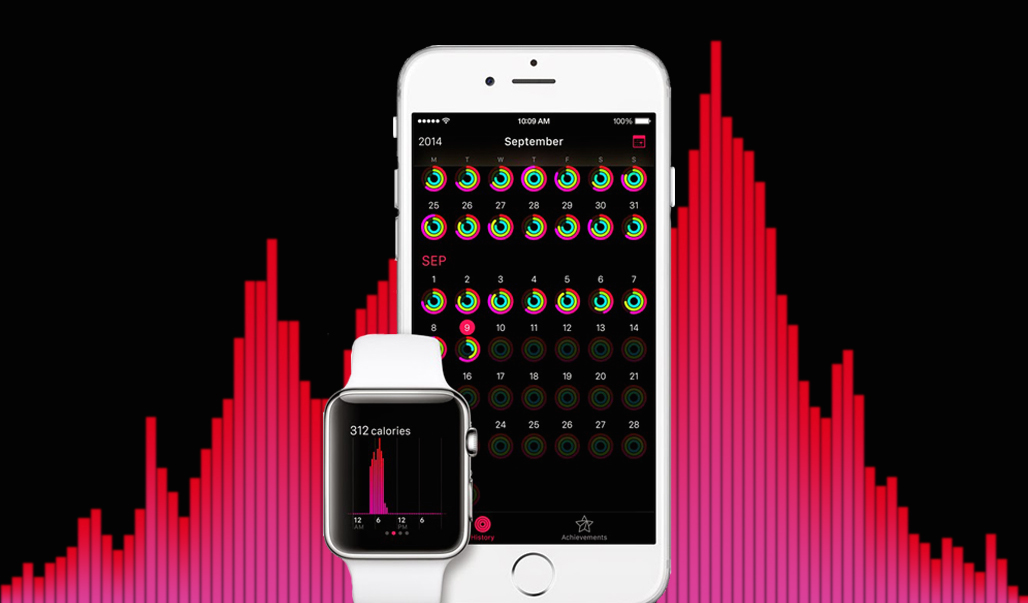
- 2 Min Read / Blog / 3.2.2020

Apple’s recently announced Watch lineup is poised to expand the wearable market to include millions of eager iPhone fans. While it tightly integrates with iOS for notifications and Bluetooth-assisted actions, Apple Watch runs its own Watch OS, which accounts for some of the device’s user interface needs and takes advantage of its biometric sensors and force-sensitive display panel. But beyond a 2-inch user interface, Watch OS brings a few new apps tailored to the wrist experience and focused on making health and activity data useful. And Apple’s passing mention of a new Fitness app for iOS suggests the company’s commitment to fitness extends beyond one product line. The first-party fitness tracking experience across Apple’s two newest platforms, plus assumed integration with iOS HealthKit for third-party accessibility, could completely change the way people get fit with their devices.
Apple Watch comes bundled with two modes to view users’ fitness progress. The first is its Activity app, which visualizes three metrics to log daily fitness goals—a Move ring that represents calories burned, an Exercise ring that tracks minutes of brisk activity, and a Stand ring that ensures users aren’t sedentary throughout their day. The app uses Apple Watch’s accelerometer and pedometer to catalog movement, and its intelligent heart rate sensors help the wearable understand when users are performing cardio exercise beyond a brisk walk.
The next new app is Workout, which helps users track their performance and provides stats about pace and intensity as they work toward predetermined goals. Both app experiences award achievements and animated badges for new personal records or goals met, gamifying the act of exercise and encouraging long-term subscription to an exercise regimen. This award and goal-setting system supports friendly competition and motivates self-improvement, and borrows from video game achievements and similar mechanics in other fitness-tracking and self-improvement products.
This data is shared with a just-announced Fitness app on iOS, which shows goal completion and progress over time. Billed as a “companion app” for Apple Watch, Fitness brings Apple’s offering to feature parity with fitness tracker mainstays like FitBit. Apple’s commitment to fitness products is reinforced by its inclusion of the Apple Watch Sport product line, which includes wearables with designs and materials optimized for athletes and workout aficionados.
But Apple’s foray into fitness tracking doesn’t leave third-parties out of the question. With iOS 8’s HealthKit, Apple Watch and Fitness can share activity data with the system, which is empowered to pass that along to third-party applications that can make their own inferences or suggestions based on that data. Apps that adopt Apple’s forthcoming WatchKit framework will even be able to offer their own services directly on users’ wrists, taking full advantage of the Apple Watch’s various sensors.
Apple Watch may be the first wearable product to truly capture the public’s imagination, and will usher in a new platform for apps to connect with their users in a more intimate and immediate way. With Activity, Workout, and Fitness, Apple is setting the bar high with a first-party solution that bridges its future platforms, the next generation of iOS and the forthcoming Watch OS. But third-party apps shouldn’t consider the issue settled—with WatchKit and HealthKit, there’s still a lot of room to stretch their apps’ utility and strengthen their importance in users’ lives.